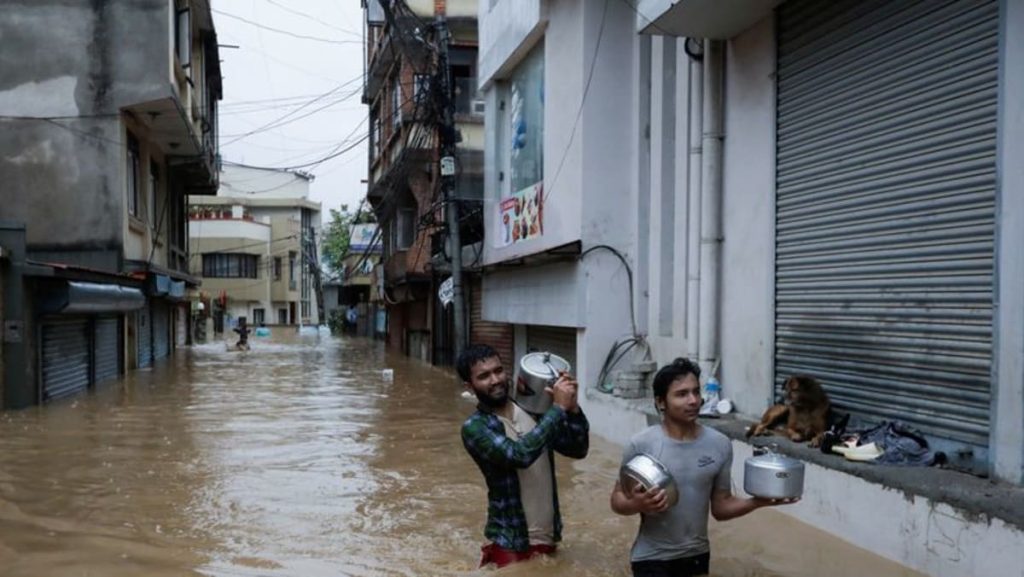Since early Friday, at least 38 people have lost their lives in Nepal due to heavy rains causing flooding and landslides, with fears that the death toll may rise as 29 people are still missing. The Kathmandu valley, comprising the country’s capital and home to four million people, was the hardest hit, disrupting normal activity and traffic. The excessive rainfall, with certain areas receiving up to 322.2mm over the last day, led to the swelling of rivers, overflowing onto roads and bridges.
Rescue efforts were underway with the use of helicopters and rubber boats to aid those stranded on rooftops or elevated ground. Police have been working to clear debris and reopen blocked highways after landslides that occurred in 28 places across the nation. The continuous downpours were attributed to a low-pressure system over neighbouring India, delaying the retreat of the monsoon rains in South Asia. Weather forecasters predicted that the rains may not ease until Sunday morning, with central and eastern regions experiencing moderate to extremely heavy rainfall.
While international flights remained operational, domestic flights were severely disrupted, according to the spokesperson for Kathmandu airport. In the southeast, the Koshi River, which flows into India’s neighbouring state of Bihar causing deadly floods annually, had reached dangerous levels of 450,000 cusecs compared to the normal flow of 150,000 cusecs. The river level was still rising, raising concerns among officials in the area. Landslides and flash floods during the monsoon season are common in Nepal, resulting in numerous casualties every year. Since the onset of the monsoon season in mid-June, authorities reported 254 deaths and 65 individuals missing due to such disasters.
The heavy rains have brought life to a standstill in Nepal, especially in the Kathmandu valley, where major roads were submerged and bridges overflowed due to the swollen rivers. The rescue operations using helicopters and boats have been crucial in evacuating those stranded on high ground or rooftops. Police have been diligently working to reopen blocked highways and clear debris from landslides that occurred in numerous locations. The continued rainfall has been linked to a low-pressure system over parts of India, prolonging the monsoon season in the region.
The weather forecasters have predicted that the rains may persist until Sunday morning, with moderate to extremely heavy rainfall experienced in central and eastern regions. In the midst of this natural disaster, international flights have been functioning steadily, but domestic flights faced major disruptions. The rising levels of the Koshi River have raised alarm as it threatens the safety of those residing in low-lying areas. Furthermore, the recurring occurrence of landslides and flash floods has resulted in numerous casualties in Nepal, highlighting the vulnerability of the mountainous nation during the monsoon season.
Despite the challenges posed by the heavy rains and flooding, rescue efforts have been ongoing to assist those impacted by the natural calamity. The widespread devastation in Nepal, particularly in the Kathmandu valley, has necessitated swift action from authorities to ensure the safety of the affected population. While the rains are expected to gradually ease by Sunday morning, the aftermath of the flooding and landslides will require extensive recovery and reconstruction efforts to restore normalcy in the region. The resilience of the people of Nepal in the face of such adversity showcases the strength and determination of the nation to overcome these challenging times together.













